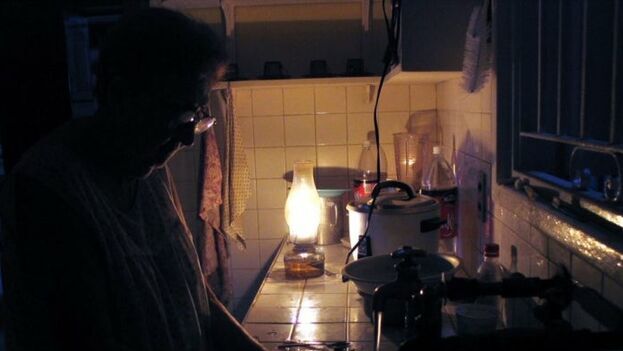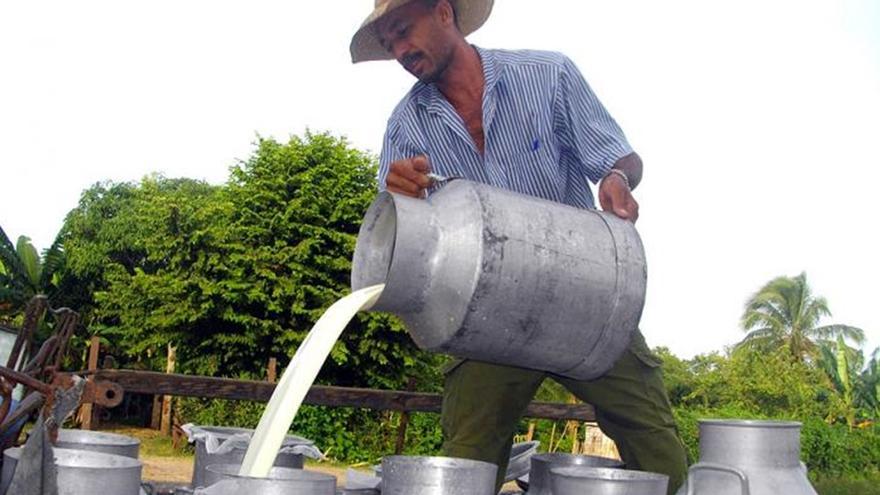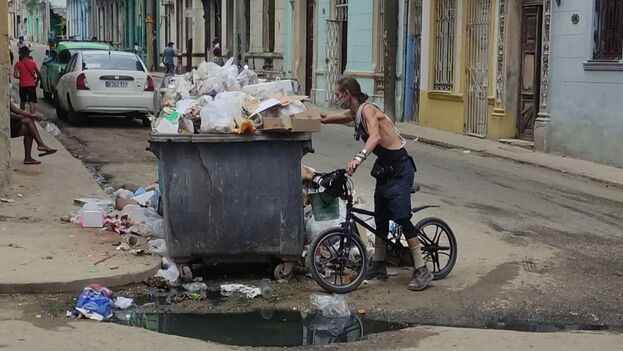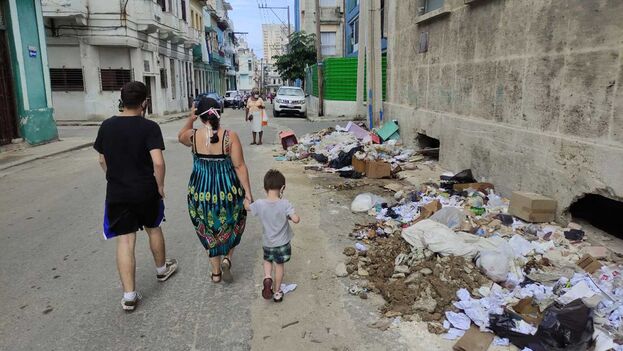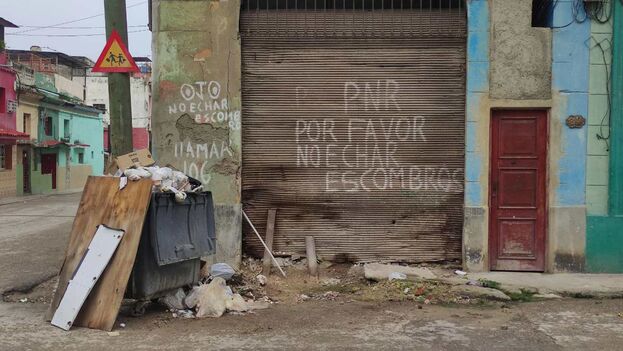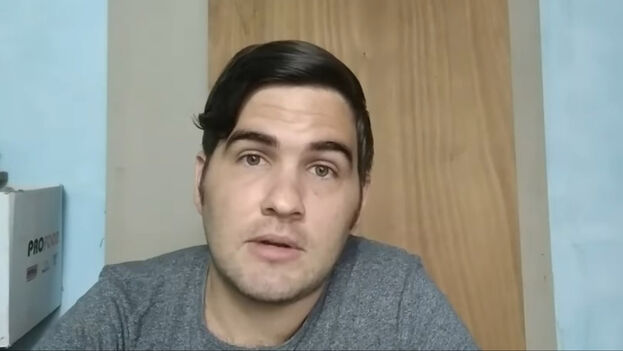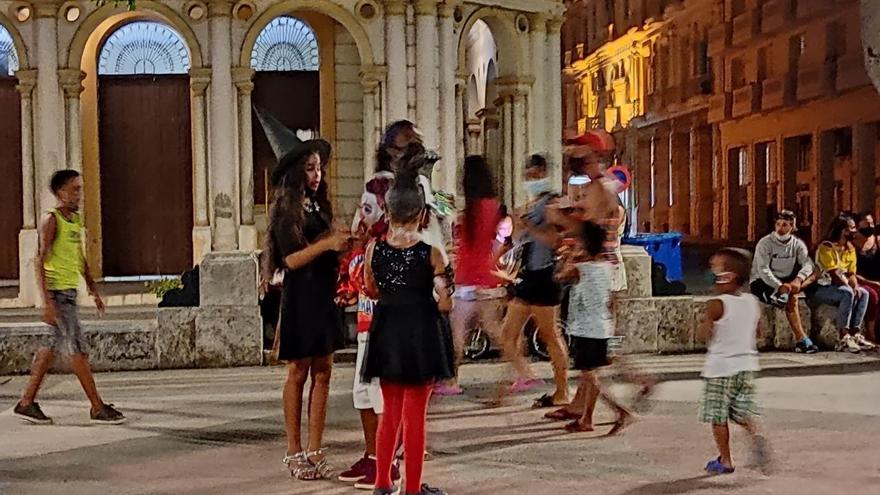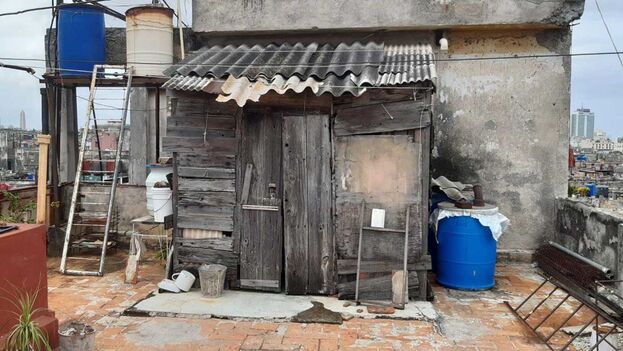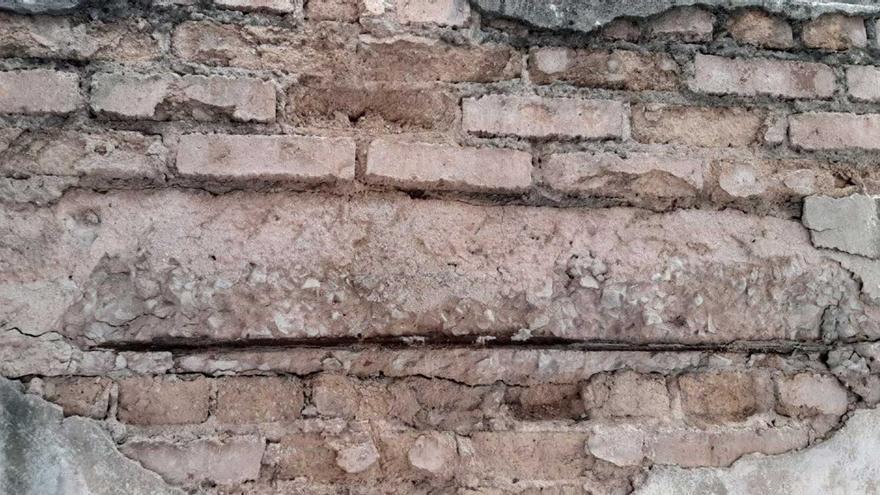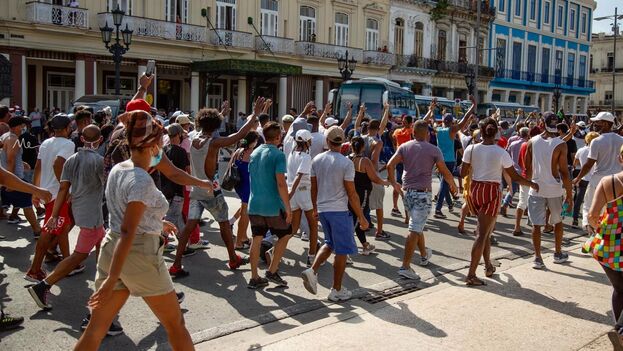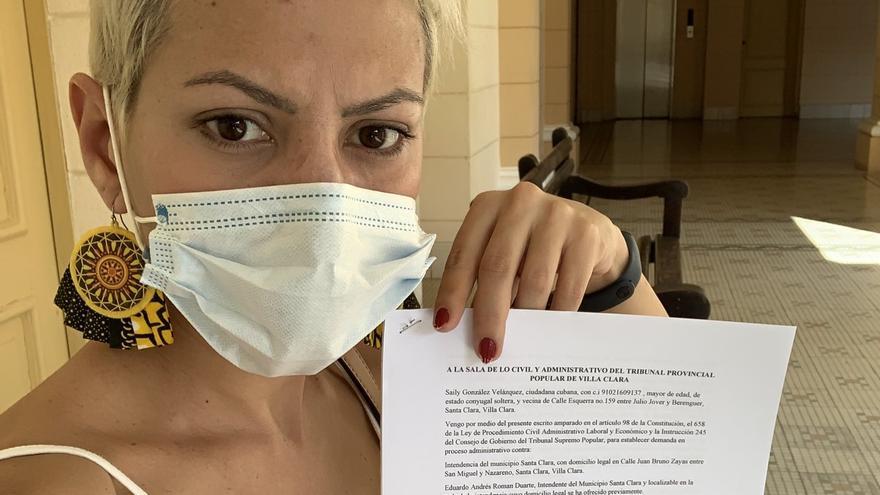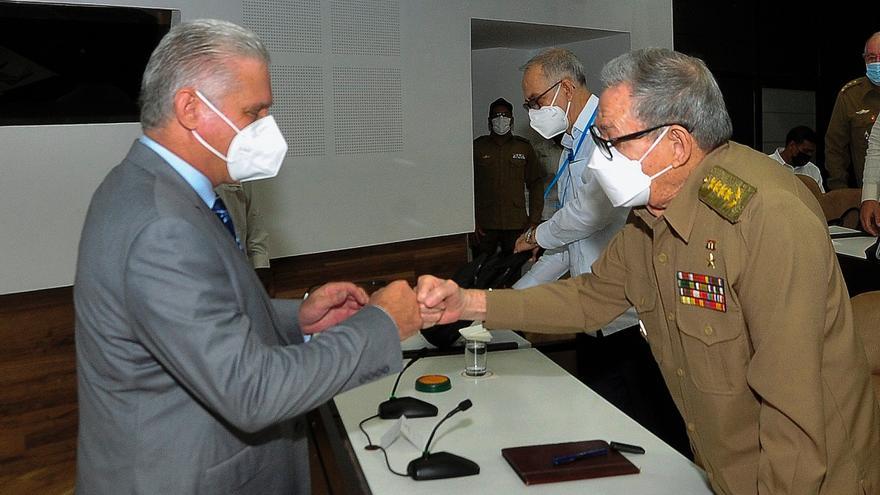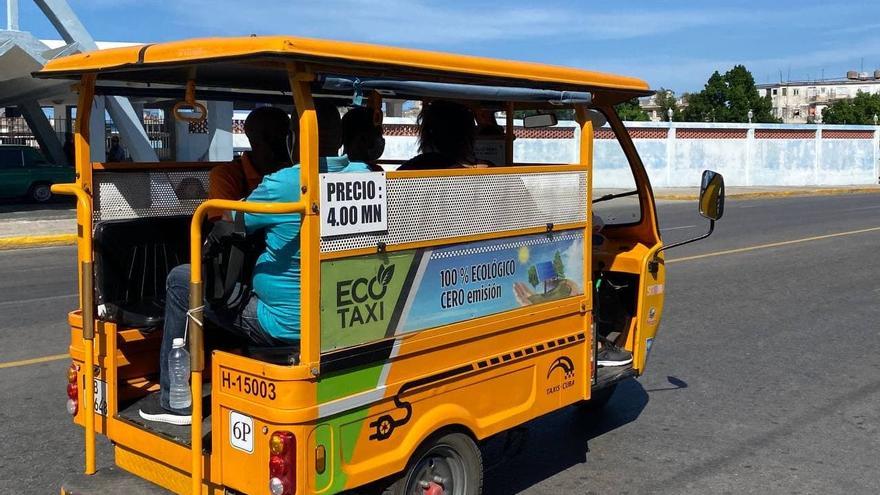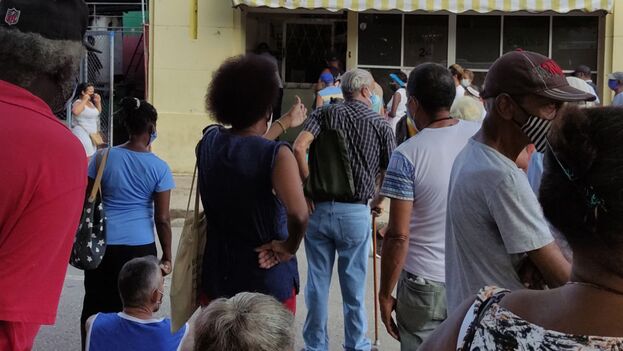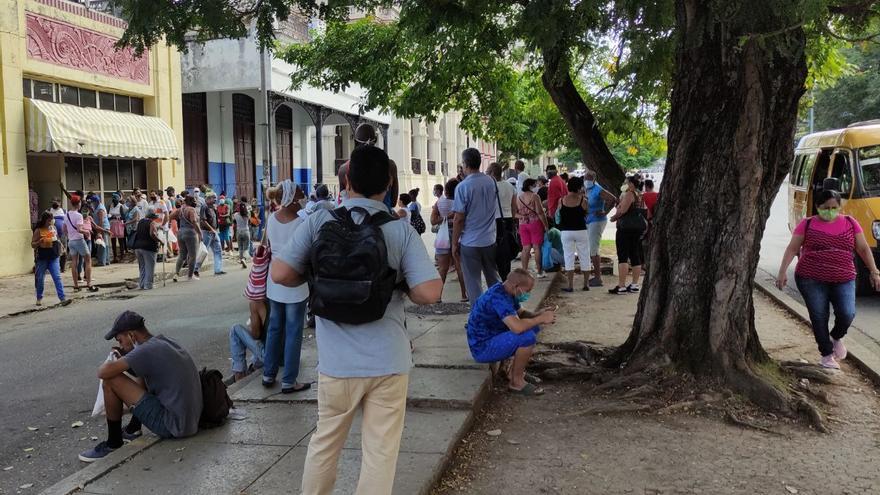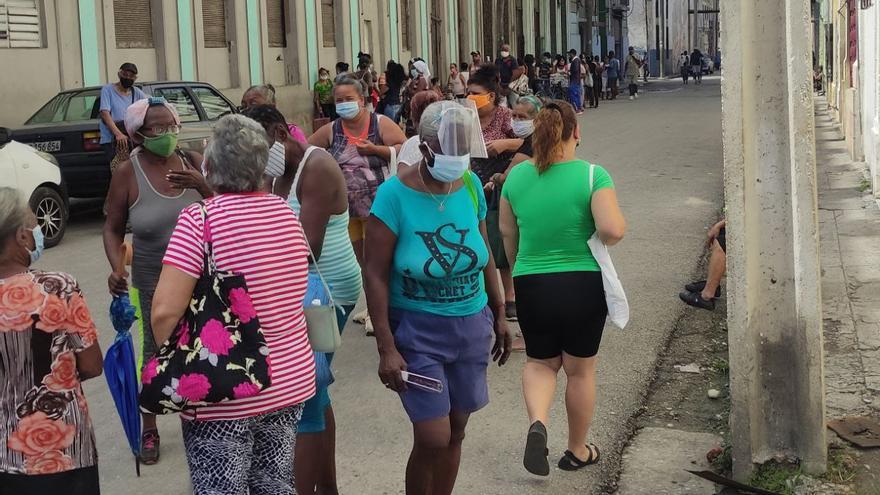The statements transmitted to the population through the state electricity monopoly confirm that the blackouts are going to continue and that, at least for the moment, it must be assumed that daily life will continue to coexist with the unexpected lack of electricity supply, and that this will happen even if the bills are paid as if nothing had happened. The monopoly also explains that the regime, far from telling the truth, hides itself in technical gibberish to avoid placing the responsibility for the blackouts on state management.
This week the information from the Electrical Union has been very intense. On Tuesday, they announced possible service interruptions as a result of a failure in the transmission line connecting with the Ernesto Guevara thermoelectric plant (CTE), in Santa Cruz del Norte, which led to the shutdown of Units 1 and 2 of that plant (155 MW), as well as others, Unit 6 of the Diez de Octubre CTE (90 MW), due to leakage in the boiler, and Unit 5 of the Antonio Maceo CTE (80 MW), due to the turbine speed regulator. continue reading
For the Electrical Union, the origin of the problem came from the greater impact on “peak hours.” which was 480 MW at 7:10 at night. Later, at 8:26 pm, Unit 1 of the CTE Ernesto Guevara (80MW) was incorporated, while Unit 2 was damaged by a leak in the furnace. It was not enough. This was followed by “service disruptions,” a convenient term, throughout the early hours of October 27, as a consequence of the reported breakdowns and, also, due to the behavior of the demand, which exceeded what was expected by 100 MW. From 2:00 am, the impact remained below 100 MW and, as of 6:02, the service was restored. Four hours of blackout.
At 7:00 in the morning, the availability of the national electrical system was 2,080 MW compared to a demand of 2,020 MW “with all the load served,” almost at the limit. As of 9:00 am, possible blackouts were noted again, this time due to a generation capacity deficit, with a maximum of 250 MW.
The information from the Electrical Union indicated that Unit 2 of the Ernesto Guevara CTE, unit 6 of Diez de Octubre, Unit1 of the Lidio Ramón Pérez CTE and Unit 5 of Antonio Maceo remained out of service due to breakdowns. Meanwhile, maintenance work was being carried out on Unit 4 of the Antonio Maceo CTE. In addition, limitations persisted in thermal generation with 698 MW. As a consequence of the foregoing, 1,038 MW were not available in distributed generation and the breakdowns mentioned, and 329 MW corresponded to Units under maintenance.
The statement said that Unit 1 of the Lidio Ramón Pérez thermoelectric plant, which completed its hydraulic test, could improve the situation once again in the national electricity service. The Electrical Union indicated that for the peak hours of October 27, the incorporation, in addition to Unit 1 in question, of the CTE Lidio Ramón Pérez (260 MW), of the Rincón (15 MW), and Varadero (17 MW). An availability of 2,734 MW and a maximum demand of 2,700 MW were estimated for the “peak,” for a reserve of 34 MW. This meant that, given the low levels of reserves, the authorities ended up recognizing that blackouts could occur.
A new note from the Electrical Union regarding October 28 highlighted that there were no blackouts in the electricity service in the morning and afternoon. However, as of 6:14 p.m., the service began to be affected due to a generation capacity deficit. During peak hours the maximum impact was 247 MW at 7:30 p.m. As a consequence, from 9:31 p.m. there was a blackout of 3 hours and 17 minutes. The electricity monopoly apologized for the inconvenience to those who wanted to rest by watching television or listening to the radio.
Next, the causes of the blackout were explained again, starting with the exits of Units 5 and 7 of the CTE Máximo Gómez de Mariel, the delay in the entry of Unit 2 of the CTE Ernesto Guevara, which synchronized at 19:59 hours, as well as the increase in demand above the planned 62 MW. Later, at 11:08 p.m. due to the unexpected departure of Unit 6 of the Máximo Gómez CTE (90 MW), another blackout occurred, with a maximum of 80 MW, which was reestablished at 12:01 a.m. on the 29th.
The electricity monopoly indicated in its statement that the availability of the national electricity system at 07:00 hours was 2,183 MW and the demand 2,045 MW with all the load served, estimating that there would be no power outages due to a deficit in generation capacity during Friday morning and afternoon, to maintain the expected conditions. And this is the question, how difficult it is to maintain those conditions.
The Otto Parellada CTE and the Máximo Gómez CTE Unit 5 remained out of service due to a breakdown, waiting for someone to repair them. Unit 3 of the Carlos Manuel de Céspedes CTE was out of service for condenser cleaning, Unit 6 of the Diez de Octubre CTE and Unit 4 of the Antonio Maceo CTE were under maintenance, also ceasing to supply electricity to the grid. At Energas Varadero, 40 MW in the steam turbine was out of service and at Energas Boca de Jaruco so was a gas turbine with 30 MW, so the limitations on thermal generation were maintained (425 MW).
For the Friday peak, the electricity monopoly predicted several Units would come on line, specifically Unit 3 at CTE Carlos Manuel de Céspedes with 130 MW; Unit 5 of the CTE Máximo Gómez with 30 MW; Unit 6 of the CTE Máximo Gómez with 85 MW and an engine in the CDE Mariel with 5 MW, with the use of 291 MW in diesel engines. Under these conditions, an availability of 2,761 MW and a maximum demand of 2,650 MW were estimated for peak hours, for a reserve of 111 MW. So if these conditions were maintained, no blackouts were foreseen, although the reserve levels were low at this time.
These statements, appearing almost daily in the communist state press, with the same justifications of outages, breakages, lack of maintenance, disconnections of power plants, peak hours, etc., etc., not only end up tiring the population, but also come to confirm what Minister Gil said in his analysis of the economy before the National Assembly, placing “blackouts as one of the nation’s main problems, and one of the most difficult and complex to solve,” at least in the short term. In any case, who compensates Cubans for the blackouts, and how? This is an issue that is not discussed, but it is essential to put this situation in order.
The minister made a more general analysis of the matter, with reference to the energy shortage and its high cost, but also cited these problems and mechanical breakdowns, to to justify the unjustifiable. He did not tell the truth. And the electricity monopoly, in its communiqués, I’m afraid, did not either, going for the technological nonsense, without allowing the Cubans to really know what the origin of the problem is.
The Electrical Union functioned relatively reasonably in providing its services before January 1, 2021. Yes, of course there were blackouts, but much less so than now. In fact, during the closures of the pandemic, in Cuba there were almost no blackouts. It is a phenomenon of the moment, and that is related, on the one hand, to the small rebound in economic activity that is taking place on the Island, after the end of 2020. The communists not only had not foreseen that to meet growing needs for electricity there need to be more production on the grid.
On the other hand, nobody wants to agree that, after the increases in electricity rates agreed to in the “Ordering Task*,” people were going to protest, as in fact happened. Electricity rates rose exponentially as of January 1 because the monopoly had no choice but to face wage increases without productivity benchmarks that compromised solvency. But the new rates were immediately questioned by all social sectors, forcing the regime to back down, thereby compromising the supply levels of the state monopoly, which are highly sensitive to prices.
The subsequent story is known. Who could be interested in providing a service, even a minimal one, when the prices charged to consumers do not pay them properly and they have to face imposed wage increases without reference to productivity?
It is already known that no leader of the Cuban economy will speak of this, but it is the origin of the problems with the blackouts and with many other sectors of activity. The Home Services price index prepared by the ONEI (which included electricity) increased by 152.8% in the interannual rate as of September, almost 90 points more than the average inflation rate, of 63.3%. The Ordering Task has upset the weak balances of the Cuban economy, specifically the relative prices of goods and services, and the blackouts will continue until the electricity monopoly restores its profitability and ensures the availability of resources to cover its very high costs (the regime seems to think that it no longer want to grant more subsidies and this cannot end well).
____________
COLLABORATE WITH OUR WORK: The 14ymedio team is committed to practicing serious journalism that reflects Cuba’s reality in all its depth. Thank you for joining us on this long journey. We invite you to continue supporting us by becoming a member of 14ymedio now. Together we can continue transforming journalism in Cuba.
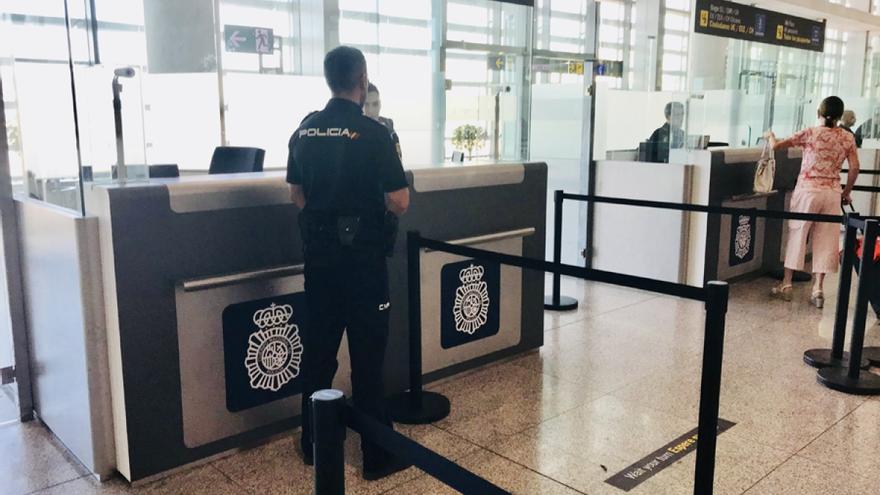
![]() 14ymedio, Rosa Pascual, Madrid, November 1, 2021 — Hopes are fading fast for the Cubans who have been stranded at the airport in Zakynthos, Greece since last Thursday. At least that is what Yanelis believes based on recent media coverage on their plight. The Cuban migrant told her story to 14ymedio on Friday. She is counting down the clock until the deadline Greek authorities have given her to leave the country.
14ymedio, Rosa Pascual, Madrid, November 1, 2021 — Hopes are fading fast for the Cubans who have been stranded at the airport in Zakynthos, Greece since last Thursday. At least that is what Yanelis believes based on recent media coverage on their plight. The Cuban migrant told her story to 14ymedio on Friday. She is counting down the clock until the deadline Greek authorities have given her to leave the country.
